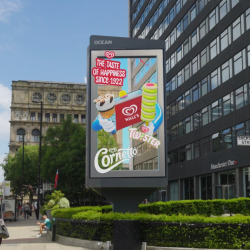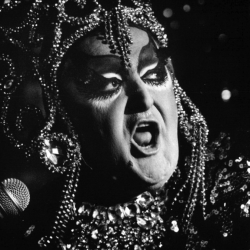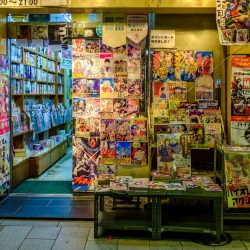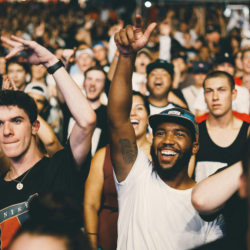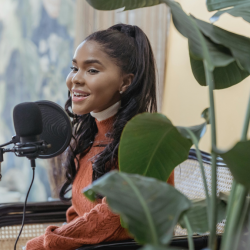The Unfiltered History Tour with Vice World News is a self-described ‘guerilla tour’ of the British Museum. The project uses AR and immersive podcasts to ‘unfilter centuries of colonial narrative’. When visitors scan the museum’s stolen artefacts, they hear stories from the perspectives these items originate from — all without the museum’s knowledge. The campaign was a hit; it earned 18M impressions, a 40% rise in TikTok followers and scooped up a whole slew of awards, including 4 Grand Prix, 5 Gold, 4 Silver, 5 Bronze at Spikes Asia. A year on, MediaCat Editor-at-large, Natasha Randhawa, re-explores the project with Ogilvy’s Art Director, Vaishakh Kolaprath, who worked on the campaign as Associate Art Director at Dentsu Webchutney.
Vaishakh, thanks so much for making the time to chat. Let’s get into it. At the start of the project, Vice World News was a freshly-formed brand looking to connect to a younger readership. How did the idea for a ‘guerilla tour’ of the British Museum come about, and what were the challenges in relation to this brief?
Thank you for this opportunity, I’m excited to dive in. Let’s get started! This idea appears to target a demographic that isn’t specifically aimed at younger individuals, but rather appeals to enthusiasts who have an interest in history or the past. I came into the project during its execution phase in 2022, specifically tasked with illustrating frames for the stories being told.
The challenge involves listening to the podcast and selecting three scenes that are pivotal and significant. These scenes must be depicted authentically, capturing the essence of the narrative accurately in the illustrations.
To be successful, the AR tech in the tour needed to smash two things. 1) Identify and scan artefacts throughout differing light conditions and 2) Impact audiences on an emotional level. In the design process, how did you balance these technical aspects of AR with artistic vision? Can you tell me more about the specific artistic elements and techniques that were considered to ensure the experience was immersive and emotionally resonant?
For me, it wasn’t an augmented reality (AR), but rather a canvas we utilised as a medium to present our concept. We established a structured approach where visuals were positioned strategically for phone scanning and other interactive elements, essentially building a robust framework. Our challenge lay not only in what we were doing, but also in how we executed it.
Shaleen, our project historian, meticulously reviewed each frame, providing detailed instructions on attire, weaponry, geography, structures, vehicles, and every minute aspect. Our primary challenge was to compose visuals within the designated grid, while allowing illustrators a degree of creative freedom. Personally, I rehearsed actions and emotions in front of a mirror and delved into classical painting techniques to infuse figures with appropriate actions and gestures. Immersing myself in various genres of music aided in capturing the mood of violence, warfare, and colonialism. We underwent multiple rounds of revision — two or three — ensuring that our frames didn’t depict excessive violence and remained engaging to a wider audience.
This process led us to the refined version you see now. Our aim was to avoid showcasing sharp weapons, bloodshed, violence, or themes related to slavery to maintain a broader appeal and not alienate the common audience.
I read that these filters were developed by a 100-person strong team, working remotely for 18 months across ten time zones. Can you talk more about this collaborative process? Were there any specific outcomes that could not have been reached without such a diversity of experience and perspectives?
We had a diverse team including the design, brand, on-ground research, innovation, film, illustration, and art history departments. Our collaboration took place during the lockdown period, when we transitioned to the new work-from-home system. Initially, like everyone else, we were disoriented and confined. Gradually, we adapted and found our rhythm within this new normal.
Our interactions were frequent and constant. Within my department, specifically illustration, we held group meetings, discussions, and presentations for higher-ups to review. It was crucial for us to take ownership and responsibility for our work, especially during this period of remote collaboration. This sense of ownership was essential for our team’s success and was something we collectively embraced.
Given the success of the project, have you seen a growing appetite (locally or globally) for more unconventional and socially conscious ad projects? Do you believe that the industry has a responsibility to share these kinds of stories and if so, what role does good design play in that process?
Definitely. ‘Design creates culture. Culture shapes values. Values determine the future.’ I’m borrowing Robert L Peters’ words here, but this is very true! There are many activation ideas that were executed long ago. If you look at Cannes entries, most of the works are very significant in society. I’m not saying it’s shaping the people or society drastically, at least one person changes that matters.
Let me tell you a story. I studied BFA from Kerala College of Fine Arts Trivandrum. My friend’s final year project was about tissue paper; how the increase in its usage has led to a significant reduction in tree count. The data hit me. It was painful. I stopped using tissue paper and I make sure to tell everyone I know too. This is what I mean when I say that design can change thinking.
On a personal level, the project has impacted your career for the positive. You were awarded Cannes no.1 Art Director and recognised by D&AD, The Drum and Campaign Brief Asia off the back of this project. A year on, what lessons from the campaign do you still carry with you today?
These opportunities are truly once-in-a-lifetime. I used to see it as a miracle; there are undoubtedly more talented art directors out there who truly deserve this position, but perhaps they haven’t yet been part of significant campaigns or projects to gain global recognition. I consider myself lucky in that regard. This project has been instrumental in pushing my boundaries, because it challenged me in ways I hadn’t experienced before. I wasn’t certain of my ability to succeed, but now I have a strong belief in my craft. A year on, I’m sure about one thing: if you’re truly enjoying the process, you don’t have to worry about the result. It will naturally happen.
Featured image: Artur Matosyan / Unsplash


























